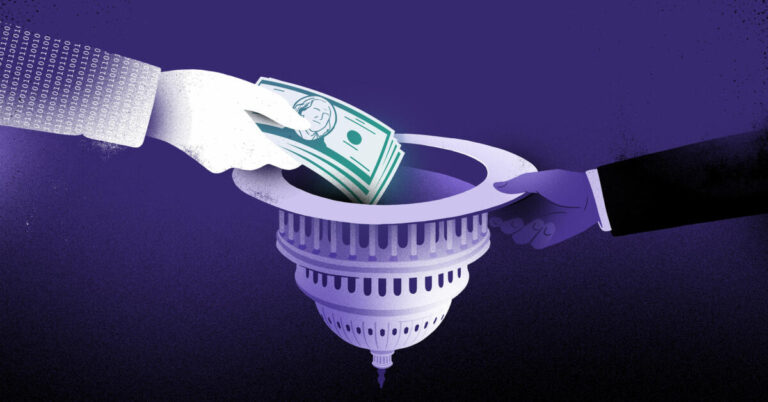AI and Privacy: Critical Legal Challenges & The Future of Data Protection
AI and Privacy are now at the center of global debates. Did you know that AI-powered facial recognition technology, already widespread in some countries, can identify individuals with over 99% accuracy? This technological marvel presents unprecedented surveillance capabilities, raising critical questions about the very essence of personal privacy.
How will artificial intelligence shape our privacy? We explore the ethical challenges and opportunities in the age of A.I., highlighting why protecting personal data is more important than ever, as discussed in Why Your Digital Privacy Matters.
This question isn’t just philosophical; it’s rapidly becoming a pressing legal reality that demands our attention.
Table of Contents
Legal Framework
The legal landscape surrounding AI and privacy is a complex patchwork of existing laws trying to adapt to rapidly evolving technology. Key legislation shaping this landscape includes:
- The General Data Protection Regulation (GDPR): Article 4 of the GDPR defines personal data broadly, encompassing any information relating to an identified or identifiable natural person. AI systems processing personal data are subject to GDPR principles, including data minimization (Article 5(1)(c)), purpose limitation (Article 5(1)(b)), and data security (Article 32), with penalties for non-compliance as high as €20 million or 4% of global annual turnover, whichever is higher (Article 83). Note Regulation 2016/679 is the main regulation.
- The California Consumer Privacy Act (CCPA) and the California Privacy Rights Act (CPRA): These landmark laws grant California residents significant rights over their personal data, including the right to know what data is collected, the right to delete data, and the right to opt-out of the sale of their data. Similar state-level laws are emerging across the U.S., creating a complex web of compliance obligations. The CCPA is codified in California Civil Code sections 1798.100-1798.199
- EU AI Act (Proposed): As this blog is writing, the EU AI Act is in the final stages of the legislative process. This pioneering piece of legislation takes a risk-based approach to AI, prohibiting certain high-risk AI systems and imposing strict requirements on others. If passed, and when it’s passed, it will significantly impact the use of AI across a wide range of industries.
- National Laws: Many countries have their own national laws related to data protection and privacy. These laws often supplement or complement international regulations like GDPR or influence frameworks like CCPA. Examples include Germany’s *Bundesdatenschutzgesetz* (BDSG) and France’s *Loi Informatique et Libertés*.
Key Legal Issues & Analysis
The intersection of AI and privacy presents several fundamental legal challenges:
Data Minimization vs. AI’s Data Hunger
AI algorithms, particularly those used in machine learning, often require vast amounts of data to train effectively. On the other hand, data protection principles like data minimization require collecting only what is necessary for a specific purpose. This tension creates a significant challenge for organizations.
- Legal Reasoning: A common approach is to use anonymization or pseudonymization techniques to process data while attempting to reduce the data’s identifiability in the AI processes. However, recent studies show that these techniques are often insufficient to prevent re-identification. Article 29 Working Party (now the European Data Protection Board) opinions on anonymization and pseudonymization offer guidance but highlight the ever-present risk of re-identification.
- Expert Commentary: “Finding the balance between AI development and data protection requires a radical shift in how we think about data,” says Dr. Anya Sharma, a leading AI ethics researcher. “We need to move towards using synthetic data or federated learning techniques that allow us to train AI models without directly accessing sensitive personal data.”
Algorithmic Bias and Discrimination
AI algorithms can perpetuate and even amplify existing biases in the data they are trained on, leading to discriminatory outcomes. This raises serious concerns about fairness, equality, and non-discrimination.
- Legal Reasoning: Article 22 of the GDPR prohibits automated decision-making, including profiling, that has legal effects or significantly affects individuals. While there are exceptions, using AI algorithms in areas like loan applications or hiring decisions requires careful consideration of potential bias and discrimination. Courts are beginning to grapple with these issues, as seen in cases involving AI-powered risk assessment tools in the criminal justice system.
- Data-backed Analysis: A ProPublica investigation showed that an AI algorithm used to predict recidivism rates was more likely to falsely flag black defendants as high-risk compared to white defendants. This highlights the potential for AI to exacerbate existing societal inequalities. The algorithm’s creators disputed the findings, underlining the difficulty in definitively proving algorithmic bias.
The Right to Explanation (Explainable AI)
The increasing complexity of AI algorithms makes it difficult to understand how they arrive at specific decisions. This lack of transparency poses a challenge to the right to explanation, which is enshrined in Article 13-15 of the GDPR.
- Legal Reasoning: While the GDPR doesn’t explicitly mandate “explainable AI,” it does require controllers to provide meaningful information about the logic involved in automated decision-making. This means organizations need to be able to explain *why* an AI system made a particular decision and *what* data it relied on. This is an evolving area of law, and regulators are still working to define the scope of the right to explanation in the context of complex AI systems.
- Expert Commentary: “Explainable AI isn’t just a legal requirement; it’s also an ethical imperative,” argues Professor Ben Carter, a legal scholar specializing in AI governance. “If we can’t understand how AI systems are making decisions, we can’t hold them accountable for their actions.”
Case Studies or Examples
- Clearview AI: This company scraped billions of images from the internet to create a facial recognition database used by law enforcement. The company faced legal challenges in several countries, including GDPR violations and breach of privacy laws. The UK Information Commissioner’s Office (ICO) imposed a fine of over £7.5 million on Clearview AI for failing to comply with UK data protection laws.
- Amazon’s Hiring Tool: Amazon abandoned an AI recruiting tool after it was found to discriminate against female candidates. The tool was trained on historical hiring data that reflected existing gender biases in the tech industry. This case demonstrates the importance of carefully auditing AI systems for bias before deploying them in sensitive areas.
- COMPAS Recidivism Algorithm:We mentioned this above in the Key legal issues and analysis section, but This case underscores the potential for AI to perpetuate existing societal inequalities.
Compliance & Best Practices
- Conduct a Data Protection Impact Assessment (DPIA): Article 35 of the GDPR requires organizations to conduct a DPIA before processing personal data using high-risk AI systems. The DPIA should identify and assess the risks to individuals’ privacy and data protection rights.
- Implement Robust Data Security Measures: Article 32 of GDPR dictates robust data security measures. Implement appropriate technical and organizational measures to protect personal data from unauthorized access, use, or disclosure. This includes encryption, access controls, and regular security audits.
- Ensure Transparency and Explainability: Provide clear and concise information to individuals about how their personal data is being used by AI systems. Develop mechanisms to explain AI decisions and allow individuals to challenge those decisions.
- Establish a Strong AI Ethics Framework: Develop a comprehensive AI ethics framework that addresses issues such as fairness, accountability, and transparency. This framework should guide the development and deployment of AI systems throughout your organization.
- Train your staff: Ensure that all staff involved in the development and deployment of AI systems are trained on data protection principles and AI ethics. This will help to ensure that AI systems are used responsibly and ethically.
Common Pitfalls & Legal Risks
- Ignoring Data Minimization: Failing to limit the amount of personal data collected and processed by AI systems can increase the risk of data breaches and non-compliance with data protection laws.
- Neglecting Algorithmic Bias: Deploying AI systems without adequately addressing algorithmic bias can lead to discriminatory outcomes and legal challenges.
- Overlooking Transparency Requirements: Failing to provide clear and accessible information to individuals about how their personal data is being used by AI systems can erode trust and violate transparency obligations.
- Lack of oversight and human review: Relying solely on AI decisions without human oversight can lead to errors and unfair outcomes.
- Vendor Lock-in Risks: Some AI models and services may create data silos. Consider options for data portability based on open standards and APIs. In addition, be careful that some services lock you into long-term contracts that are not suitable for your circumstances.
Future Perspectives
The legal landscape surrounding AI and privacy is constantly evolving.
- Increased Regulatory Scrutiny: Expect to see increased scrutiny of AI systems by data protection authorities around the world. Regulators are becoming more sophisticated in their understanding of AI and are likely to impose stricter enforcement actions for non-compliance with data protection laws.
- Development of New Laws and Regulations: New laws and regulations specifically addressing AI and privacy are likely to emerge in the coming years. The EU AI Act, if enacted, will serve as a model for other jurisdictions.
- Emphasis on Ethical AI: There is a growing emphasis on the ethical implications of AI. Organizations will need to demonstrate a commitment to ethical AI principles to maintain public trust and avoid legal challenges.


